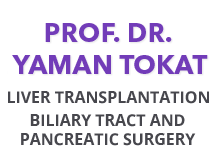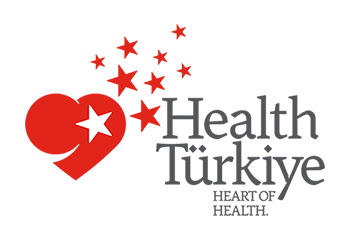Liver Transplant Surgery, Intensive Care, Early Recovery Period
Liver Transplantation – Liver Transplant Surgery Procedure
The fundamentals of the surgical technique for deceased donor liver transplantation date back 25–30 years. Over the years, the surgical method has been significantly refined, resulting in higher success rates and fewer complications. However, it remains a complex procedure that typically lasts between 6 and 12 hours.
The diseased liver is completely removed and replaced with a healthy one. Although it may seem straightforward, this surgery can involve heavy bleeding and requires a large medical team — typically one or two surgeons, three surgical assistants, three nurses, and two anesthesiologists, along with assistant doctors, nurses, and technicians.
The diseased liver must be detached from four major blood vessels, and the bile duct — the tube that carries bile from the liver to the intestines — must be separated. The new liver is then placed in position, and the main blood vessels and bile duct are reconnected to complete the operation.
Living donor liver transplantation, on the other hand, has been implemented more recently and has become increasingly common over the past decade. In this operation, two surgical teams — one removing the liver portion and the other performing the transplant — usually work simultaneously. The portion of liver taken from the donor is placed into the recipient’s abdomen, replacing the diseased liver while preserving the recipient’s main vein (vena cava). Surgically, it is much more complex than a cadaveric transplant and requires a larger team. At least two surgeons, four surgical assistants, three nurses, two anesthesiologists, two anesthesia assistants, and four anesthesia nurses and technicians are needed throughout the operation. Additionally, microsurgeons are required to stitch the very small arteries, and expert radiologists perform intraoperative ultrasound imaging. A living donor liver transplant takes approximately 8–16 hours, while the donor surgery lasts around 4–6 hours.
Even at this final stage, the operation may be canceled or postponed due to donor organ incompatibility or other complications. It is a demanding surgery and can last anywhere from 6 to 18 hours.
Placement of the T-Tube and Bile Drainage
Your surgeon may find it necessary to attach a small tube called a T-tube to the bile duct. The T-tube allows bile to drain from your body into a small external bag. This makes it possible to measure the amount of bile, which ranges in color from dark yellow to dark green. After placement, the T-tube may need to remain connected to the bile bag for about 7–10 days or sometimes longer. Usually, if the T-tube imaging (T-cholangiography) performed on the tenth day shows no narrowing or bile leakage, the tube is tied off or closed. It may remain in place for 3–6 months, or sometimes longer, to allow the wound to heal and for specific tests to be performed.
The T-tube is secured to the skin with a stitch, and if the dressing around the tube becomes soiled or wet, it should be replaced. Before you are discharged from the hospital, you will be shown how to change the dressing around the T-tube, or this procedure will be performed during your hospital visits.
Intensive Care and Early Recovery After Liver Transplant Surgery
After the surgery, you will be transferred to the intensive care unit and connected to a respirator (ventilator). If everything goes well, the breathing machine can be gradually removed within 24–48 hours; however, if necessary, you may need to remain on the respirator for a longer period. In addition to the T-tube, you may have other drainage tubes in your abdomen during the postoperative period. These tubes are used to drain fluids that accumulate around your liver and are usually removed before you are discharged home.
After spending a few days in the intensive care unit, you will most likely remain in the transplant unit for an additional two to three weeks of recovery before being allowed to go home. During this time, you will be closely monitored for signs that your body may be rejecting the new organ, such as high fever, pain, jaundice, fluid accumulation, side effects from medications, and elevated liver function tests. This postoperative recovery period involves both physical and mental rehabilitation, and the effort you put forth during this time will greatly influence how quickly you regain your strength and return to normal life.
Liver Biopsies
Your transplant team may take tissue samples from your new liver to monitor your recovery, if deemed necessary. This procedure is called a biopsy and is usually performed to check for organ rejection, jaundice, infection, or other potential complications. Biopsies can be performed either during hospitalization or on an outpatient basis. Before the procedure, a local anesthetic will be injected into the right side of your abdomen. Then, using a special needle (Hepafix), a small sample of liver tissue will be collected for microscopic examination. After the biopsy, you will need to lie on your side for at least one hour and remain in bed for about four hours.
Post-Hospital Outpatient Follow-Ups
During the first few months after your discharge from the hospital, you will need to visit the transplant unit once or twice a week for outpatient checkups. The purpose of these follow-ups is to monitor your recovery and identify any potential complications. At each visit, your liver function will be carefully evaluated, and you will undergo a physical examination to detect any possible infections.
You will also be asked to provide a blood sample to measure the levels of tacrolimus (Prograf) or cyclosporine (Neoral) in your bloodstream. These results will help your doctors adjust your medication dosage. Taking too much of these drugs may cause excessive immunosuppression and increase the risk of infection, while taking too little may lead to rejection of the transplanted liver. As the risk of infection and organ rejection decreases, the frequency of your clinic visits will also be reduced.
The purpose of these follow-up visits is to monitor your recovery and detect any possible complications.
- Do not take your Prograf or Sandimmun medications immediately before your blood test, as this will affect the results.
- Bring your medication list and this booklet to every check-up visit so you can note any important information.





